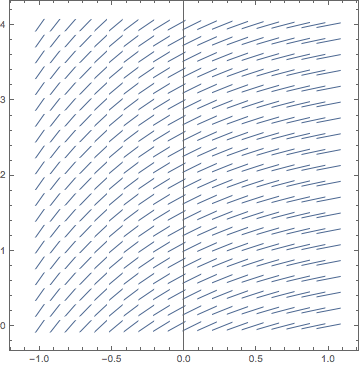Slope Fields with Mathematica - Exercise 1.3
Making Slope Fields by Yourself
A Post Exercise Discussion of
dy/dx = e-x, on the region -1 ≤ x ≤ 1, and 0 ≤ y ≤ 4
Don't cheat! If you didn't do the exercise in Mathematica before you came here to see the discussion, go back and do it now!
Assuming that you did the exercise correctly, you should have produced a picture that was a version of the following, possibly with a different size:

Here too, you should have noticed that the isoclines for the slope field are vertical lines, (just like the last two examples.) Do you recognize the general trend of the field this time? This is the hardest one we've seen so far for matching the trend with memorized graphs! Think of exponential decay graphs flipped upside down, and you'd get close to these slopes, wouldn't you?
Again, this makes sense if you think about solving this differential equation using integration. If you simply integrated:
You'd get:
This would make a whole family of upside exponential decay functions, depending upon what value you give to the constant C, which would match what the slope field is telling us. The connection between slope fields and analytic solutions should be getting pretty solid by now.
We're done with the discussion of this problem, so let's go back to the exercises.







